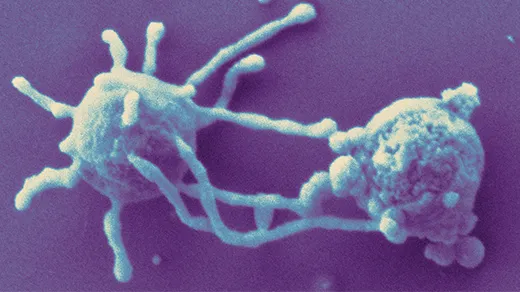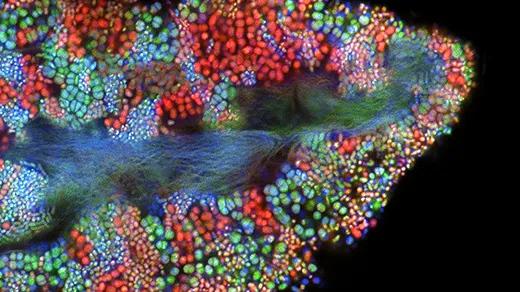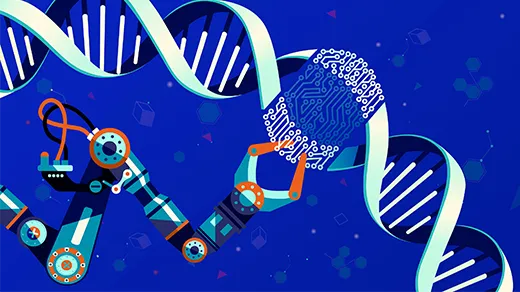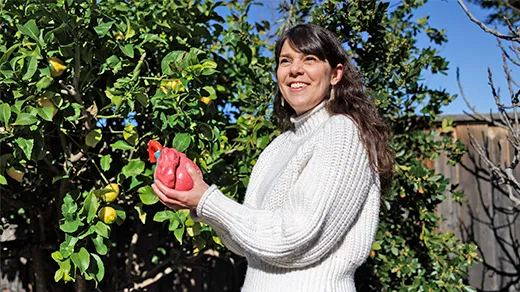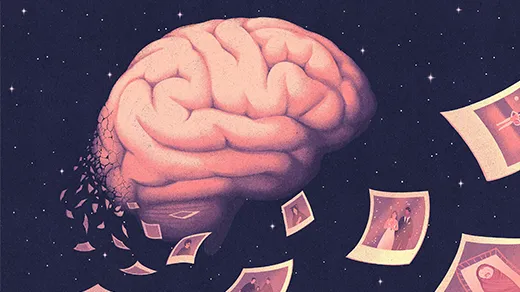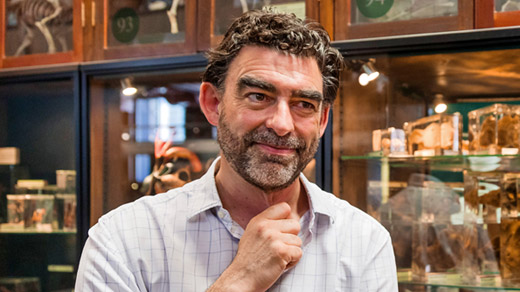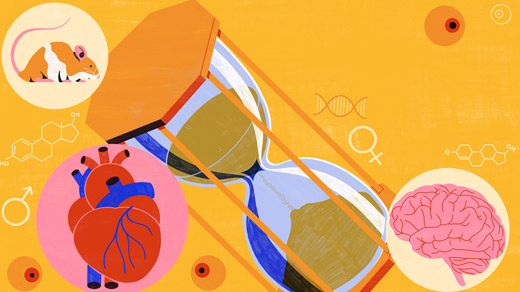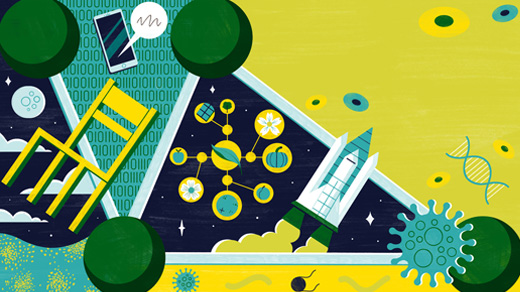What's up in
Cells
Latest Articles
Primitive Asgard Cells Show Life on the Brink of Complexity
As researchers race to cultivate more of the intriguing cells from the deep seafloor, the few cells now growing in labs are giving us our best glimpses of the forerunners of all complex life.
Global Microbiome Study Gives New View of Shared Health Risks
The most comprehensive survey of how we share our microbiomes suggests a new way of thinking about the risks of developing some diseases that aren’t usually considered contagious.
Can We Program Our Cells?
By genetically instructing cells to perform tasks that they wouldn’t in nature, synthetic biologists can learn deep secrets about how life works. Steven Strogatz discusses the potential of this young field with researcher Michael Elowitz.
She Studies Growing Arteries to Aid Heart Attack Recovery
Regenerative medicine researcher Kristy Red Horse’s discoveries may someday help damaged hearts heal better. Her stewardship of her Native American heritage may advance science in other ways too.
The Year in Biology
Momentum for new ideas in Alzheimer’s research joined advances in neuroscience, developmental biology and origin-of-life studies to make 2022 a memorable year of biological insights.
She Finds Keys to Ecology in Cells That Steal From Others
The ecologist Holly Moeller studies microorganisms that expand their range by absorbing organelles and gaining new metabolic talents from their prey.
A Biochemist’s View of Life’s Origin Reframes Cancer and Aging
The biochemist Nick Lane thinks life first evolved in hydrothermal vents where precursors of metabolism appeared before genetic information. His ideas could lead us to think differently about aging and cancer.
Why Do We Get Old, and Can Aging Be Reversed?
Everybody gets older, but not everyone ages in the same way. In this episode, Steven Strogatz speaks with Judith Campisi and Dena Dubal, two biomedical researchers who study the aging process.
What Is Life?
Without a good definition of life, how do we look for it on alien planets? Steven Strogatz speaks with Robert Hazen, a mineralogist and astrobiologist, and Sheref Mansy, a chemist, to learn more.
